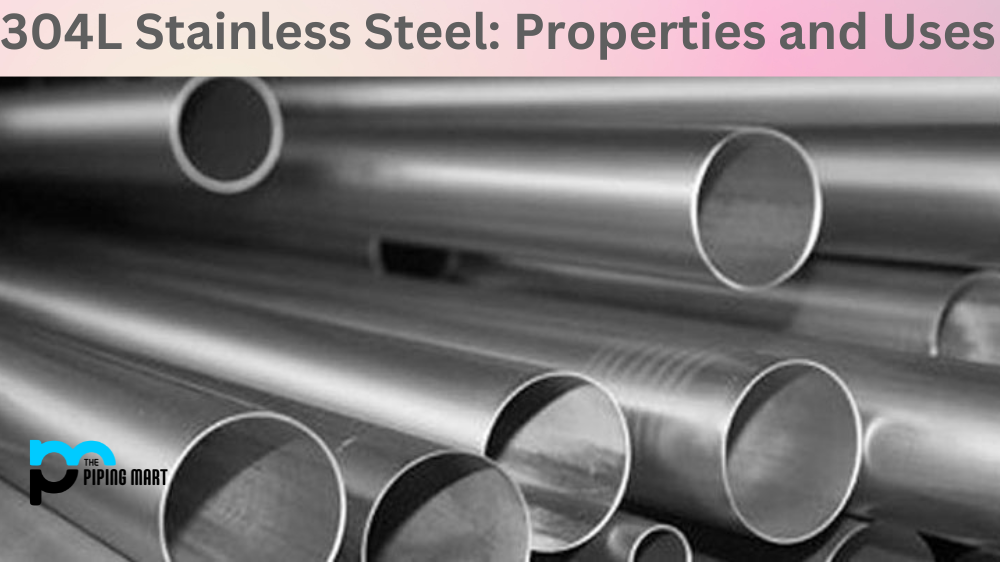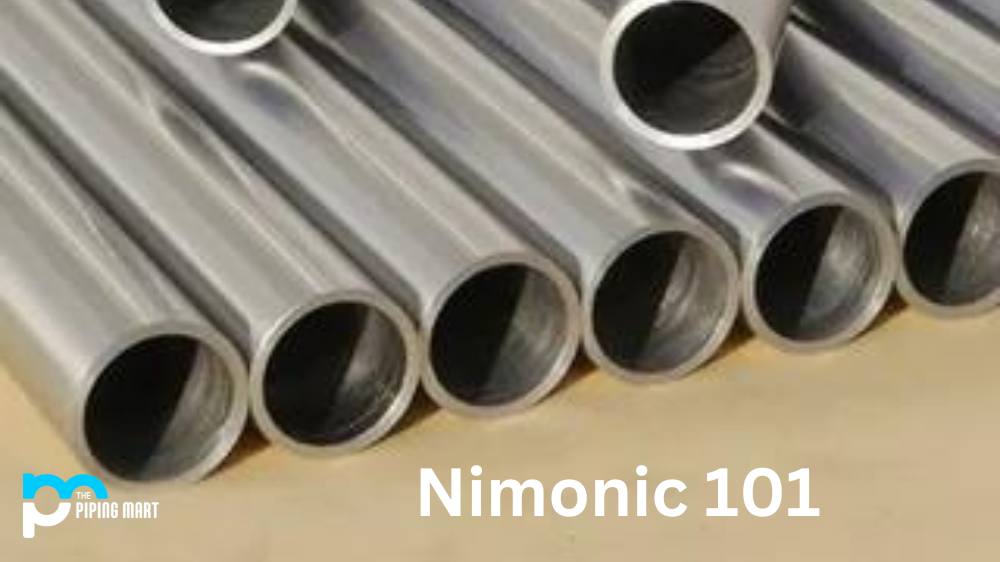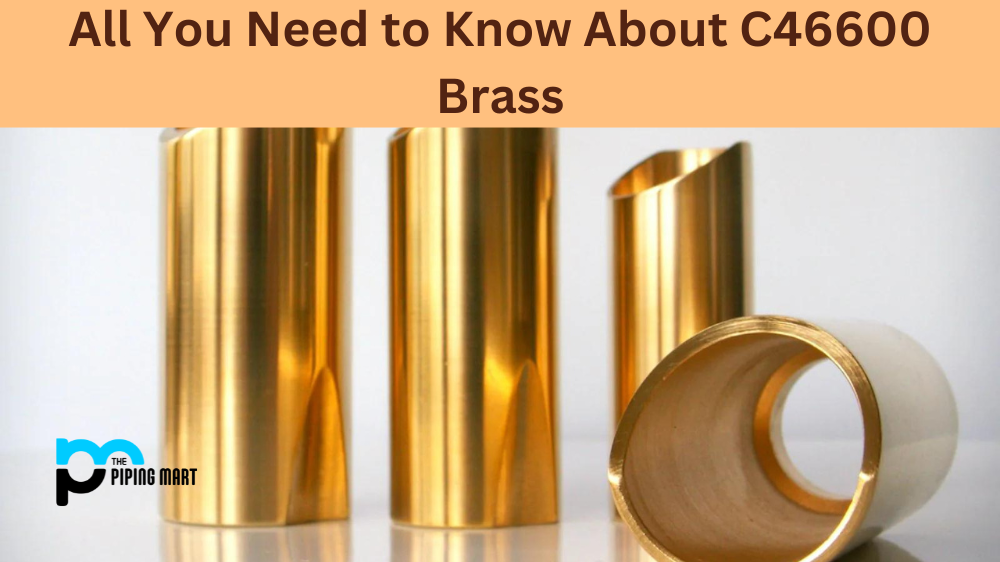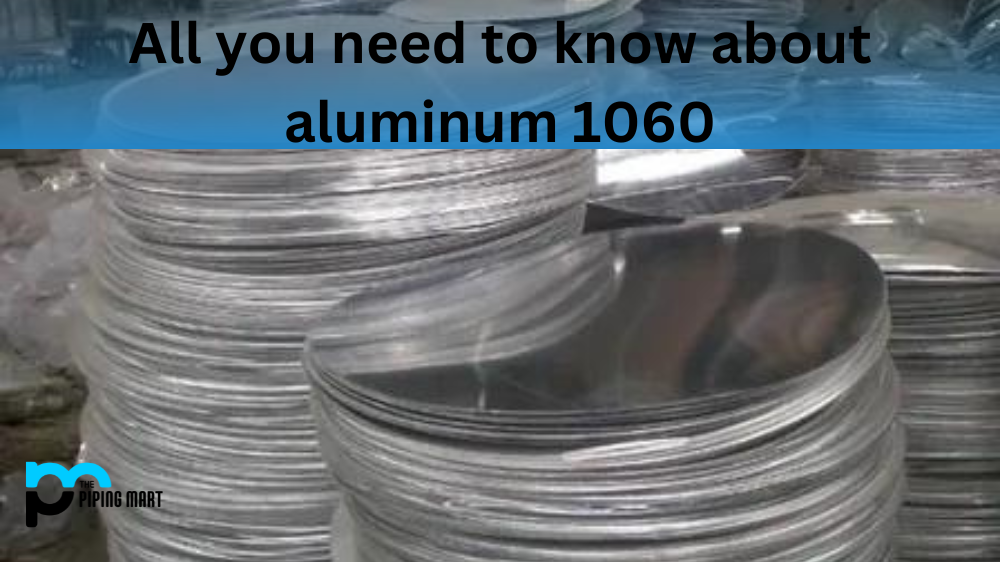304L stainless steel is an alloy of iron, carbon, and chromium. It has excellent corrosion resistance in a wide range of environments and is easily welded and formed. This material is popular in many industries due to its durability and versatile application. Let’s take a look at the properties and uses of 304L stainless steel.
What Forms is 304L Stainless Steel Available at Piping Mart?
- 304L Stainless Steel Nuts
- 304L Stainless Steel Bolts
- 304L Stainless Steel Pipes
- 304L Stainless Steel Tubing
- 304L Stainless Steel Plates
- 304L Stainless Steel Valves
- 304L Stainless Steel Forged Fittings
- 304L Stainless Steel Flanges
- 304L Stainless Steel Fasteners
304L Stainless Steel Composition
One of the most important properties of SS 304L is its chemical composition. This alloy is made up of iron, chromium, nickel, manganese, silicon, and carbon. The high levels of chromium and nickel give 304L stainless steel excellent corrosion resistance. Additionally, the low carbon content of this alloy makes it ideal for welding and other applications where high temperatures are a concern.
| CHEMICAL COMPOSITION | |||||||||
|---|---|---|---|---|---|---|---|---|---|
| C 0.030% | Si 0.75% | Mn 2.0% | P 0.045% | S 0.030% | |||||
| Cr 19.0% | Ni 10.0% | N 0.10% | |||||||
304L Stainless Steel Properties
304L stainless steel has excellent corrosion resistance, making it ideal for a variety of applications. Its low carbon content provides superior immunity to intergranular corrosion after welding or stress relieving. Furthermore, it exhibits superior strength at room temperature that can be further enhanced when cold work. It also has good formability and exceptional toughness, even at cryogenic temperatures.
304L Stainless Steel Physical Properties
304L Stainless Steel is widely used for its unbeatable combination of corrosion resistance, weldability, and formability. Its properties makes it particularly ideal for chemical expositions and in marine environments, thus being very popular among creators of products for those areas. It is possible to machinist this steel without having to worry about its structural integrity since it has excellent machinability properties to its advantage. Not only that, but 304L’s low carbon content also makes it non-magnetic while still providing hardening capabilities if desired. Other remarkable characteristics include its strength against stress corrosion cracking and superior condition when exposed to acidic atmospheres.
| PHYSICAL PROPERTIES | ||||||
|---|---|---|---|---|---|---|
| Density | Electrical conductivity (% IACS) | Thermal conductivity (BTU-in/hr-ft²-°F) | Specific heat capacity | Thermal expansion (1/°F) | Melting Point (°F) | |
| 0.29 | 2.4 | 112 | 0.12 | 0.00000940 | 2550 | |
304L Stainless Steel Mechanical Properties
UNS S30403 is a type of stainless steel that offers excellent mechanical properties, making it an ideal choice for applications that require a combination of strength, corrosion resistance, and formability. It has good weldability and can be machined to very close tolerances. Its low carbon content makes it resistant to intergranular corrosion and its chromium content helps prevent pitting and crevice corrosion. This steel boasts excellent fabrication characteristics such as forming, bending, drawing, or spinning. Additionally, 304L stainless steel offers good impact strength at both room temperature and low temperatures. As a result, it is widely used in applications such as oil refineries, chemical plants, paper mills, and food processing equipment.
| MECHANICAL PROPERTIES | |||||||||
|---|---|---|---|---|---|---|---|---|---|
| PROPERTY | MINIMUM | MAXIMUM | |||||||
| Yield Strength Range (Rp0.2 Offset) (ksi) | 30.5 | 140 | |||||||
| Tensile Strength Range (Rm) (ksi) | 70 | 185 | |||||||
| Elongation (AL=5 x Ø) | 40.0% | 58.0% | |||||||
| Brinell Hardness (H) | 160 | 201 | |||||||
| Modulus of Elasticity (ksi) (E): 28500 | |||||||||
| Machineability General Index: 40% | |||||||||
Tensile Strength
Another important property of UNS S30403 is its tensile strength. This alloy has a minimum tensile strength of 75 ksi (515 MPa). This means that it can withstand a great deal of force before it begins to deform. The high tensile strength of 304L stainless steel makes it ideal for applications where high temperatures are a concern.
Ductility
Another important property of 304L stainless steel is its ductility. This alloy has a minimum ductility of 40%. This means that it can be drawn out into thin wires without breaking. The high ductility of 304L stainless steel makes it ideal for applications where flexibility is a concern.
Corrosion Resistance
One of the most important properties of SS 304L is its corrosion resistance. This alloy has excellent resistance to both acidic and basic environments. Additionally, 304L stainless steel has good resistance to pitting and crevice corrosion. The high levels of chromium and nickel give 304L stainless steel excellent corrosion resistance.
Weldability
Another important property of 304L stainless steel is its weldability. This alloy can be easily welded using all standard welding methods. Additionally, 304L stainless steel can be welded using both gas tungsten arc welding (GTAW) and plasma arc welding (PAW).
304L Stainless Steel Specifications
- AISI 304L
- AMS 5511
- AMS 5569
- ASTM A167
- ASTM A182
- ASTM A213
- ASTM A240
- ASTM A249
- ASTM A269
- ASTM A270
- ASTM A276
- ASTM A312
- ASTM A314
- ASTM A336 (304L)
- ASTM A403
- ASTM A473
- ASTM A478
- ASTM A479
- ASTM A511
- ASTM A554
- ASTM A580
- ASTM A632
- ASTM A666
- ASTM A688
- ASTM A774
- ASTM A778
- ASTM A813
- ASTM A814
- ASTM A851
- DIN 1.4306
- DIN 1.4307
- MIL A-23196
- MIL S-23195
- MIL S-23196 (304L)
- MIL S-4043
- QQ S763
- QQ S766
- UNS S30403
304L Stainless Steel Uses
Due to its versatility, AISI 304L is used in a wide range of industries, including automotive, food processing, architecture, pharmaceuticals, petrochemicals, power generation, and more. Some common uses include kitchen equipment such as sinks, cookware, and cutlery; components for industrial equipment; medical instruments; structural parts; tubing; pumps; valves; fasteners; hardware; covers for outdoor equipment like boats and trailers; etc.
Conclusion:
304L stainless steel is an incredibly versatile material with excellent corrosion resistance in many different environments. Its low carbon content allows it to be welded without any post-weld heat treatment while still providing superior strength and formability across all temperatures. As such, it is commonly used in a variety of industries, from automotive to food processing to power generation. If you are looking for a durable yet versatile material for your next project, consider using 304L stainless steel!

Abhishek is a seasoned blogger and industry expert, sharing his insights and knowledge on various topics. With his research, Abhishek offers valuable insights and tips for professionals and enthusiasts. Follow him for expert advice on the latest trends and developments in the metal industry.




